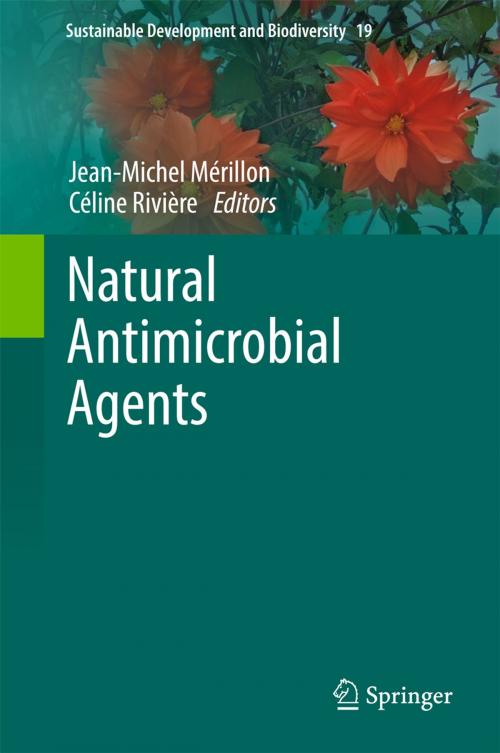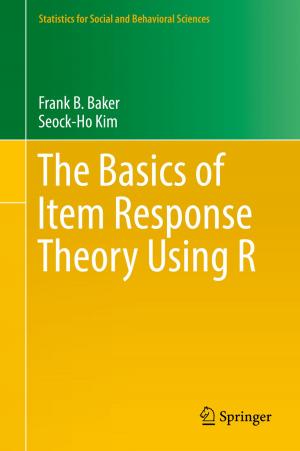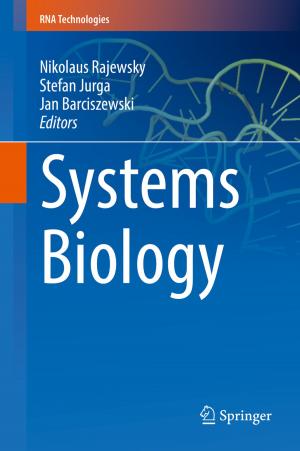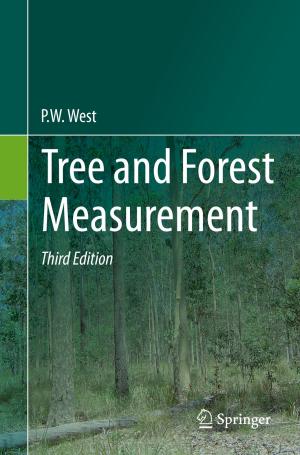Natural Antimicrobial Agents
Nonfiction, Science & Nature, Science, Biological Sciences, Botany, Ecology| Author: | ISBN: | 9783319670454 | |
| Publisher: | Springer International Publishing | Publication: | February 8, 2018 |
| Imprint: | Springer | Language: | English |
| Author: | |
| ISBN: | 9783319670454 |
| Publisher: | Springer International Publishing |
| Publication: | February 8, 2018 |
| Imprint: | Springer |
| Language: | English |
Documenting the latest research in the field of different pathogenic organisms, this book presents the current scenario about promising antimicrobials in the following areas: Part I. Plants as source of antibacterials, Part II. Naturally occurring antifungal natural products, Part III. Antiparasitic natural products, Part IV. Antiviral natural products. Renowned scientists from the globe have been selected as authors to contribute chapters. Use of plants for various ailments is as old as human civilization and continuous efforts are being made to improve medicinal plants or to product their bioactive secondary metabolites in high amounts through various technologies. About 200,000 natural products of plant origin are known and many more are being identified from higher plants and micro-organisms. Some plants based drugs are used since centuries and there is no alternative medicine for many such drugs as cardiac glycosides. Drug discovery from medicinal plants or marine micro-organisms continues to provide an important source of new drug leads. Research on new antibacterials represents a real and timely challenge of this century, particularly for the treatment of infections caused by clinical isolates that show multidrug resistance. The main microorganisms involved in the resistance process have been identified and given the acronym ESKAPE for Enterococcus faecium, Staphylococcus aureus, Klebsiella pneumoniae, Acinetobacter baumanii, Pseudomonas aeruginosa and Enterobacteriaceae. Multidrug resistant Mycobacterium tuberculosis including highly drug-resistant strains (XDR-TB) has also emerged as one of the most important clinical challenges of this century. Plants of diverse taxa and marine micro-organisms are rich source of these antimicrobials. An attempt has been made to compile the recent information about natural sources of antibacterials and their sustainable utilization. Increased panic of these pathogens warrants a growing demand for research to undertake the threat of multidrug resistance. The search for new antifungal, antiparasitic and antiviral natural products is far from devoid of interest. According to the WHO report in 2013, malaria still represents some 207 million cases worldwide and more than 3 billion of people are still exposed to this risk. Similarly, about 350 million people are considered at risk of contracting leishmaniasis. The fight against some viruses also requires that the research on natural products continue. For example, even if an antiretroviral with direct action was recently approved in Europe in 2013, its high cost does not allow to offer it to an exposed population in countries where the cost of drugs remains a problem for a large part of the population. These books are useful to researchers and students in microbiology, biotechnology, pharmacology, chemistry and biology as well as medical professionals.
Documenting the latest research in the field of different pathogenic organisms, this book presents the current scenario about promising antimicrobials in the following areas: Part I. Plants as source of antibacterials, Part II. Naturally occurring antifungal natural products, Part III. Antiparasitic natural products, Part IV. Antiviral natural products. Renowned scientists from the globe have been selected as authors to contribute chapters. Use of plants for various ailments is as old as human civilization and continuous efforts are being made to improve medicinal plants or to product their bioactive secondary metabolites in high amounts through various technologies. About 200,000 natural products of plant origin are known and many more are being identified from higher plants and micro-organisms. Some plants based drugs are used since centuries and there is no alternative medicine for many such drugs as cardiac glycosides. Drug discovery from medicinal plants or marine micro-organisms continues to provide an important source of new drug leads. Research on new antibacterials represents a real and timely challenge of this century, particularly for the treatment of infections caused by clinical isolates that show multidrug resistance. The main microorganisms involved in the resistance process have been identified and given the acronym ESKAPE for Enterococcus faecium, Staphylococcus aureus, Klebsiella pneumoniae, Acinetobacter baumanii, Pseudomonas aeruginosa and Enterobacteriaceae. Multidrug resistant Mycobacterium tuberculosis including highly drug-resistant strains (XDR-TB) has also emerged as one of the most important clinical challenges of this century. Plants of diverse taxa and marine micro-organisms are rich source of these antimicrobials. An attempt has been made to compile the recent information about natural sources of antibacterials and their sustainable utilization. Increased panic of these pathogens warrants a growing demand for research to undertake the threat of multidrug resistance. The search for new antifungal, antiparasitic and antiviral natural products is far from devoid of interest. According to the WHO report in 2013, malaria still represents some 207 million cases worldwide and more than 3 billion of people are still exposed to this risk. Similarly, about 350 million people are considered at risk of contracting leishmaniasis. The fight against some viruses also requires that the research on natural products continue. For example, even if an antiretroviral with direct action was recently approved in Europe in 2013, its high cost does not allow to offer it to an exposed population in countries where the cost of drugs remains a problem for a large part of the population. These books are useful to researchers and students in microbiology, biotechnology, pharmacology, chemistry and biology as well as medical professionals.















